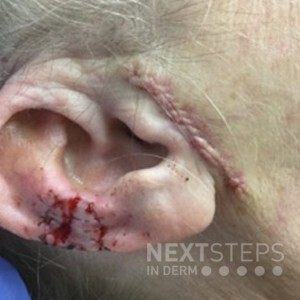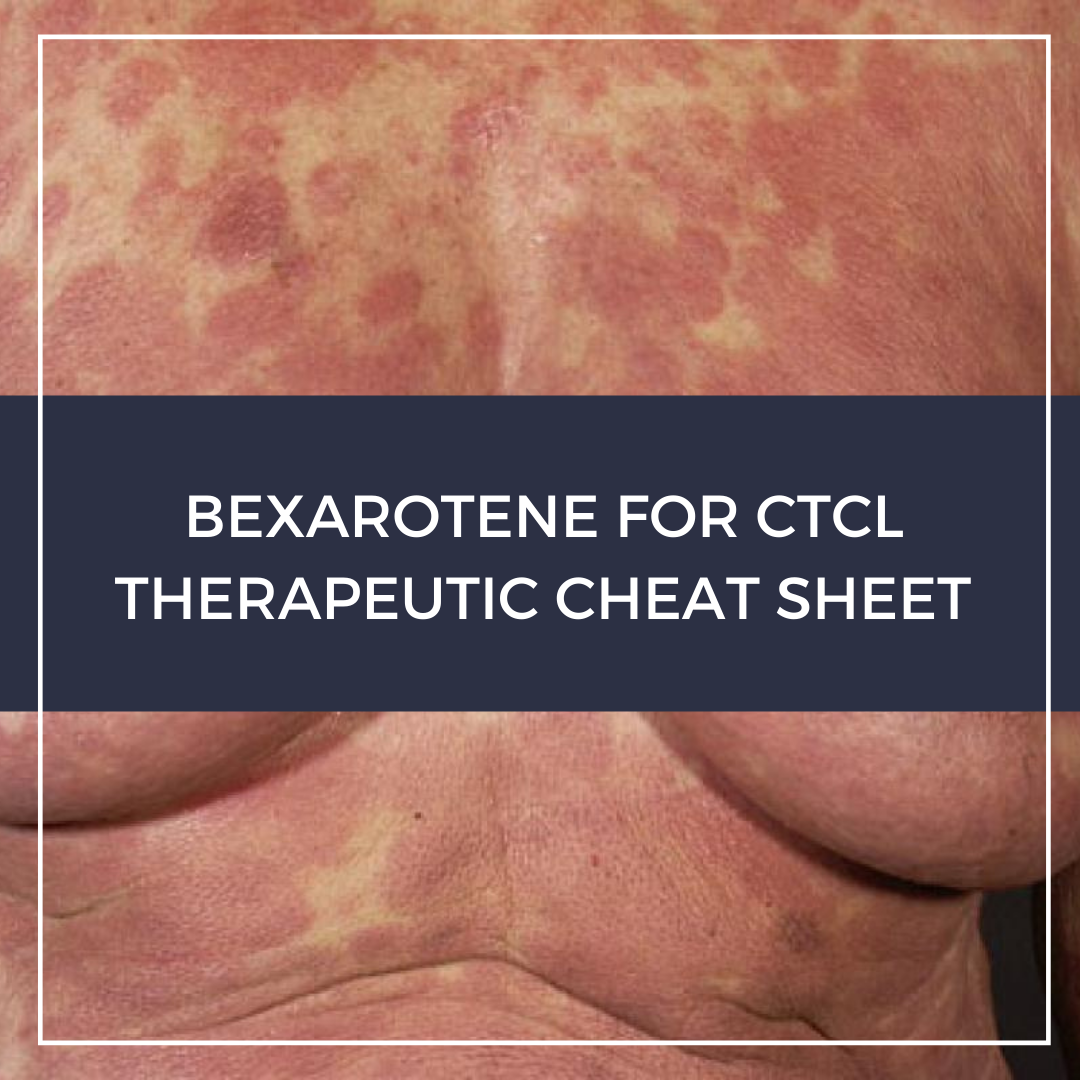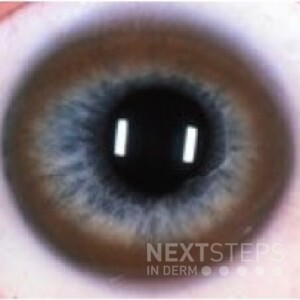Mohs Surgery- Friday Pop Quiz 8/13/2021
 This patient underwent Mohs surgery and presents for suture removal. The following photo is an example of which type of closure?
A. Split-thickness skin graft
B. Full-thickness skin graft
C. Composite graft
D. Transposition flap
E. Interpolation flap
To find out the correct answer and read the explanation, click here.
Brought to you by our brand partner Derm In-Rev …
This patient underwent Mohs surgery and presents for suture removal. The following photo is an example of which type of closure?
A. Split-thickness skin graft
B. Full-thickness skin graft
C. Composite graft
D. Transposition flap
E. Interpolation flap
To find out the correct answer and read the explanation, click here.
Brought to you by our brand partner Derm In-Rev …
 This patient underwent Mohs surgery and presents for suture removal. The following photo is an example of which type of closure?
A. Split-thickness skin graft
B. Full-thickness skin graft
C. Composite graft
D. Transposition flap
E. Interpolation flap
To find out the correct answer and read the explanation, click here.
Brought to you by our brand partner Derm In-Rev …
This patient underwent Mohs surgery and presents for suture removal. The following photo is an example of which type of closure?
A. Split-thickness skin graft
B. Full-thickness skin graft
C. Composite graft
D. Transposition flap
E. Interpolation flap
To find out the correct answer and read the explanation, click here.
Brought to you by our brand partner Derm In-Rev … 

 Alopecia areata is a form of non-scarring hair loss that affects both children and adults, causing significant quality of life impairment. Varying from localized to widespread hair loss, including alopecia totalis and universalis variants, alopecia areata can be self-resolving or chronic in its course. For years and in some cases centuries, treatment was limited to caustic substances that irritate …
Alopecia areata is a form of non-scarring hair loss that affects both children and adults, causing significant quality of life impairment. Varying from localized to widespread hair loss, including alopecia totalis and universalis variants, alopecia areata can be self-resolving or chronic in its course. For years and in some cases centuries, treatment was limited to caustic substances that irritate …  Cutaneous T cell lymphoma (CTCL) is the most common primary cutaneous lymphoma, and in some patients, it could be persistent for decades. Therapy for CTCL depends on disease stage and response to prior treatments. In this month’s installment of Therapeutic Cheat Sheets, we will discuss use of bexarotene for the treatment of CTCL.
BEXAROTENE THERAPEUTIC CHEAT SHEET
Compiled by: Adrianna Gonzale …
Cutaneous T cell lymphoma (CTCL) is the most common primary cutaneous lymphoma, and in some patients, it could be persistent for decades. Therapy for CTCL depends on disease stage and response to prior treatments. In this month’s installment of Therapeutic Cheat Sheets, we will discuss use of bexarotene for the treatment of CTCL.
BEXAROTENE THERAPEUTIC CHEAT SHEET
Compiled by: Adrianna Gonzale …  TikTok is the newest medium in which to learn skincare tips, and this month’s Patient Buzz includes several articles that provide a dermatologist’s opinion on the validity of TikTok trends. Can glycolic acid work as deodorant? Can shaving cream soothe a sunburn? Does salt water improve acne?
Read about TikTok skincare trends and other dermatology news from the consumer press and be ready fo …
TikTok is the newest medium in which to learn skincare tips, and this month’s Patient Buzz includes several articles that provide a dermatologist’s opinion on the validity of TikTok trends. Can glycolic acid work as deodorant? Can shaving cream soothe a sunburn? Does salt water improve acne?
Read about TikTok skincare trends and other dermatology news from the consumer press and be ready fo …  A 20-year-old male presents with jaundice, hepatomegaly, blue lunulae, and the ocular finding as shown. What is the genetic mutation in this condition?
A. Phenylalanine hydroxylase (PAH) gene
B. α-galactosidase A (GLA) gene
C. ATP7B gene
D. Glucocerebrosidase (GBA) gene
E. Cystathionine β-synthase (CBS) gene
To find out the correct answer and read the explanation, click here. …
A 20-year-old male presents with jaundice, hepatomegaly, blue lunulae, and the ocular finding as shown. What is the genetic mutation in this condition?
A. Phenylalanine hydroxylase (PAH) gene
B. α-galactosidase A (GLA) gene
C. ATP7B gene
D. Glucocerebrosidase (GBA) gene
E. Cystathionine β-synthase (CBS) gene
To find out the correct answer and read the explanation, click here. …